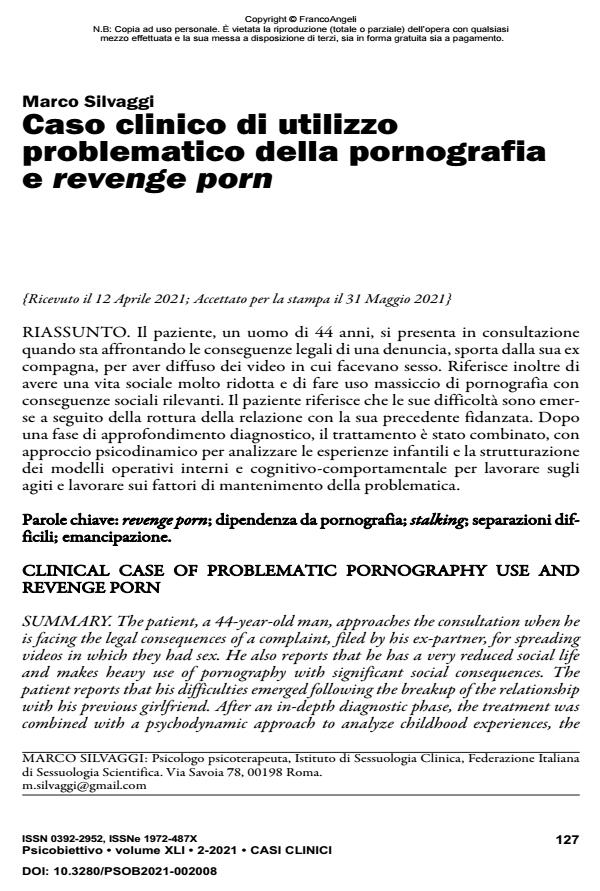Clinical case of problematic pornography use and revenge porn
Journal title PSICOBIETTIVO
Author/s Marco Silvaggi
Publishing Year 2021 Issue 2021/2
Language Italian Pages 13 P. 127-139 File size 219 KB
DOI 10.3280/PSOB2021-002008
DOI is like a bar code for intellectual property: to have more infomation
click here
Below, you can see the article first page
If you want to buy this article in PDF format, you can do it, following the instructions to buy download credits

FrancoAngeli is member of Publishers International Linking Association, Inc (PILA), a not-for-profit association which run the CrossRef service enabling links to and from online scholarly content.
The patient, a 44-year-old man, approaches the consultation when he is facing the legal consequences of a complaint, filed by his ex-partner, for spreading videos in which they had sex. He also reports that he has a very reduced social life and makes heavy use of pornography with significant social consequences. The patient reports that his difficulties emerged following the breakup of the relationship with his previous girlfriend. After an in-depth diagnostic phase, the treatment was combined with a psychodynamic approach to analyze childhood experiences, the structuring of internal operating models, and cognitive-behavioral approach to work on the acted as well as identifying the factors that maintain the problem.
Keywords: Revenge porn; porn addiction; stalking; difficult separations; emacipation.
Marco Silvaggi, Caso clinico di utilizzo problematico della pornografia e revenge porn in "PSICOBIETTIVO" 2/2021, pp 127-139, DOI: 10.3280/PSOB2021-002008